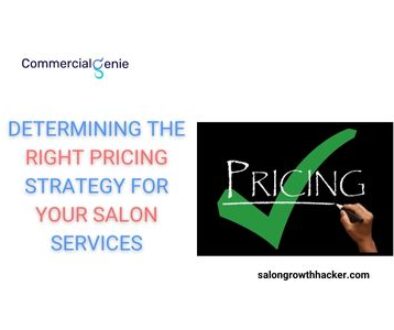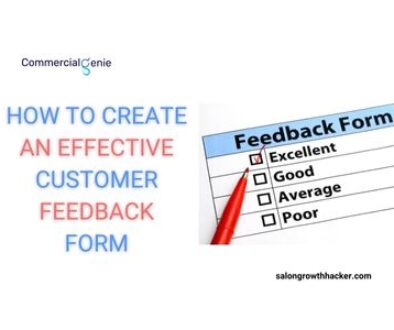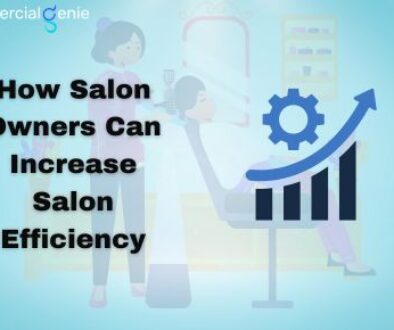The Importance of Building a Website for Salon Owners
Introduction:
To build a salon website is a critical step in establishing a strong online presence for your business, allowing you to attract new customers, improve the overall customer experience, and establish credibility in the digital realm. With a well-designed and optimised website, salon owners can tap into the vast potential of online marketing and gain a competitive edge in the industry.
Section 1: Boosting Visibility and Attracting New Customers by build a salon website
Online Search: In the age of smartphones and search engines, potential customers rely heavily on the internet to find local businesses, including salons. Having a well-optimized website increases your chances of appearing in relevant search results. Incorporate keywords like “salon websites,” “website for hair salon,” and “website of beauty salon” throughout your website’s content to improve its search engine rankings.
Showcase Your Services: A salon website serves as an online portfolio, allowing you to showcase your expertise, highlight your services, and display images of your salon’s work. Include detailed descriptions of your services, pricing, and special promotions to entice potential customers.
Visual Appeal: By designing an eye-catching website, you can draw people in and make a good impression. Include pictures that show off the atmosphere, chic decor and contented salon customers. This graphic representation promotes confidence and trusts in your salon.
Online booking: The ability to provide online booking capability is one of the most important benefits of having a salon website. This service allows customers to make appointments whenever and wherever they want. To speed up the booking process and reduce phone calls, integrate a user-friendly booking system into your website.
Section 2: Enhancing Customer Experience and Engagement
Contact Information and Location: A website offers customers a centralised location to access vital details about your salon, such as contact information, an address, and business hours. Ensure this information is prominently posted on your website for simple communication and visitor access.
Personalised Content: Use your website to communicate with your audience by offering insightful information. Write blog entries or articles with hair care, makeup, or fashion advice. This content displays your knowledge, keeps people interested, and motivates them to revisit your website.
Testimonials and Reviews: Incorporate customer testimonials or reviews on your website to build trust and credibility. Positive feedback from satisfied clients serves as social proof and can influence potential customers’ decisions to choose your salon.
Frequently Asked Questions (FAQs): Anticipate common questions that potential customers may have and include an FAQ section on your website. Address queries regarding services, pricing, products, and safety measures. This saves customers and your staff time by answering commonly asked questions instantly.
Social Media Integration: Integrate your salon’s social media profiles into your website to foster a cohesive online presence. This allows visitors to easily navigate to your social media pages, where you can share more interactive content, engage with your audience, and build a community.
Section 3: Establishing Credibility and Differentiating Your Salon
Professional Image: A well-designed and functional website adds professionalism to your salon’s brand image. It shows that you are up to date with modern trends and technology, instilling confidence in potential customers.
Branding and Unique Identity: Your website is an opportunity to showcase your salon’s brand identity. Use consistent branding elements like colours, logos, and fonts throughout your website to reinforce your salon’s unique identity. This helps create a memorable impression and sets you apart from competitors.
About Us Page: Dedicate a section of your website to an “About Us” page where you can share the story of your salon, its mission, values, and the expertise of your team. This personal touch allows potential customers to connect with your brand on a deeper level.
Online Portfolio: A website allows you to create an online portfolio to showcase your salon’s work. Display images of various hairstyles, nail designs, and transformations to demonstrate the quality of your services and your stylists’ skills. This visual evidence of your salon’s expertise can be a persuasive factor for potential customers.
Client Testimonials: Highlighting positive client testimonials and reviews on your website helps build trust and credibility. Encourage satisfied clients to leave reviews and display them prominently on your website. This social proof can be influential in attracting new customers.
Awards and Recognitions: If your salon has received any awards or industry recognition, showcase them on your website. This further establishes your salon’s credibility and positions you as a trusted and respected establishment.
Section 4: SEO and Online Marketing Benefits
Improved Search Engine Rankings: By optimising your website’s content with relevant keywords and implementing effective SEO strategies, you can improve your salon’s visibility in search engine results. This helps drive organic traffic to your website, increasing the chances of attracting new customers.
Local SEO: Implement local SEO techniques to target customers in your specific geographical area. This includes optimising your website for location-based keywords, creating Google My Business listing, and getting listed on online directories. These efforts enhance your salon’s visibility among local searchers.
Social Media Integration: Your website is a hub for all your online marketing efforts. Integrating social media sharing buttons encourages visitors to share your content, increasing its reach and generating more traffic to your website.
Email Marketing Integration: Integrate email marketing tools into your website to capture visitor email addresses. This allows you to build an email subscriber list and stay in touch with your customers through targeted email campaigns, promoting new services, discounts, or special offers.
Analytics and Data Insights: Use website analytics programs like Google Analytics to get insightful data about the operation of your website. To hone your marketing strategy and boost the efficiency of your website, keep track of metrics like visitor demographics, page views, and conversion rates.
For more SEO information, you can read this blog.
Conclusion:
To build a salon website for your salon is no longer optional—it is a crucial investment in your business’s success. A well-designed and optimised website helps you attract new customers, enhance customer experience, establish credibility, and differentiate your salon from competitors. With features like online booking, personalised content, and social media integration, your website becomes a valuable tool for engaging with your audience and expanding your salon’s reach. By incorporating effective SEO strategies and staying current with industry trends, you can ensure that your salon website remains a powerful marketing asset. Embrace the digital landscape, leverage the benefits of a salon website, and position your salon for long-term success in the ever-evolving beauty industry.
For website development services, you can contact Commercial Genie.





